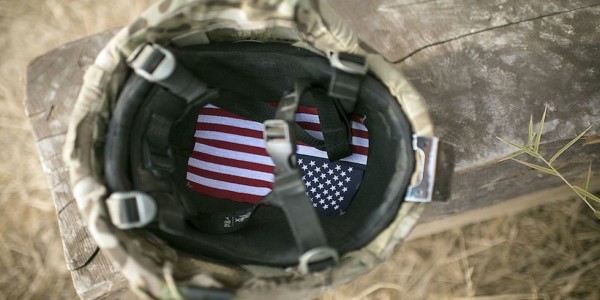

Now 64 U.S. troops have been diagnosed with Traumatic Brain Injury as a result of Iran’s Jan. 8 missile attack on U.S. bases in Iraq, a defense official confirmed on Thursday.
CNN’s Barbara Starr was first to report the latest increase in cases of brain injuries. This is the fourth time that defense officials have revised the number of troops being treated for Traumatic Brain Injury due to the attack. As of Monday, 50 U.S. troops bad been diagnosed with brain injuries.
So far, all of troops have been diagnosed with mild Traumatic Brain Injury, but that could change because brain injury symptoms develop over time, said Army Gen. Mark Milley, chairman of the Joint Chiefs of Staff.
“These things are cumulative too,” Milley said at a Thursday Pentagon news briefing. “So if you get multiple concussions that can manifest itself down the road. It could be a year, two years. We’re early in the stage of diagnosis. We’re early in the stage of therapy for these troops. We’ll continue to monitor them – for the rest of their lives, actually.”
On Jan. 8, Iran launched 16 ballistic missiles at Iraqi bases hosting U.S. troops in retaliation for the U.S. airstrike that killed Maj. Gen. Qasem Soleimani, head of Iran’s Islamic Revolutionary Guard Corps. A total of 11 missiles struck Al-Asad Air Base.
At one location on the base, the blast from a missile strike collapsed a T-wall onto a bunker where a service member was sheltering, Air Force Maj. Gen. Alex Grynkewich, the deputy commander for operations and intelligence for U.S. troops in Iraq and Syria, said recently.
“When you have a situation where, you know, we had a fair amount of high explosive go off on al-Assad Air Base, it takes some time to figure out who was near where the explosions were, what bunkers were most at risk,” Grynkewich said at a Jan. 23 Pentagon news conference. “Then it also takes some time for some of those symptoms of a concussion or potentially worse injuries to manifest.”
President Donald Trump initially said no U.S. troops were harmed by the missile attack, but then Kevin Baron of Defense One first revealed on Jan. 16 that 11 service members had been treated for Traumatic Brain Injury. The Defense Department has continued to revise up the number of troops diagnosed with brain injuries ever since.
Traumatic Brain Injury has been one of the signature wounds of both the Iraq and Afghanistan wars. While U.S. troops have survived blasts that would have been fatal in previous wars due to better protective equipment, they have also suffered from the type of brain injuries that until the 21st Century were seen mostly in professional football players.
Because U.S. troops often survived several roadside bomb blasts, the damage done to their brains became worse over time. Thousands of cases of Traumatic Brain Injury initially went undiagnosed because the Defense Department did not have criteria to screen service members for brain injuries until 2006.
The effects of Traumatic Brain Injury can be crippling and can also mimic symptoms of Post Traumatic Stress. A 2018 study by the Department of Veterans Affairs found that troops with multiple brain injuries are twice as likely to die by suicide.
The Veterans of Foreign Wars has criticized Trump for saying the troops with Traumatic Brain Injury were not as badly wounded “relative to other injuries that I’ve seen.”
However, Milley said the U.S. military classifies troops with mild Traumatic Brain Injury as “not seriously injured.”
“That’s not to minimize or dismiss or anything,” Milley said. “That’s just to say that’s how we categorize casualties.”
When asked if U.S. troops at Al-Asad should have had better helmets and bunkers to protect them from the threat of Iranian ballistic missiles, Milley said no.
“These were 1,000- to 2,000-pound munitions,” Milley said. “These things have a bursting radius of 50 to 100 feet. That’s the shrapnel and the actual blast. These are very, very serious, significant weapons. If you’re within a certain range of that thing, there’s no helmet or anything else that is going to save you.”
“But I would argue that the defenses were pretty good in that no one was killed,” he continued. “There was no loss of life or limb. That’s significant.”
